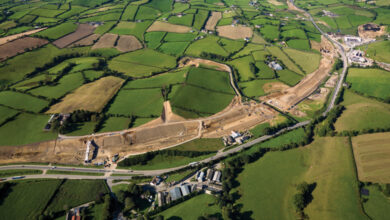Energy price control reviews
 Reviews of price controls for Northern Ireland’s electricity and gas networks will have implications for the sector and consumers.
Reviews of price controls for Northern Ireland’s electricity and gas networks will have implications for the sector and consumers.
Price controls for upgrading and operating the province’s electricity and gas networks are currently being reviewed. The determination will have implications for the sectors and consumers alike.
In April, the Utility Regulator launched a consultation on price control proposals regarding the Northern Ireland Electricity Transmission and Distribution (NIE T&D) operating costs for the grid between 2012-2017. The control will determine the level of revenue available to NIE T&D to finance the build and operation of the network. Network charges account for approximately 24 per cent of a domestic consumer’s overall electricity bill.
In the area of capital costs, the regulator proposed investment of £314.7 million, down from £374 million allocated during the fourth price control review (RP4). The document proposed special treatment for investment to facilitate renewables generation and interconnection, which will be necessary to facilitate DETI’s target of 20 per cent renewables by 2020. Revenues for this were to be ring-fenced and the process of approval would reduce risk and address uncertainty, the regulator stated. Incentive mechanisms to encourage efficiency, where appropriate, were to be allowed.
The regulator said that a 9 per cent cut in operating costs over five years was achievable. The proposed rate of return for renewable and interconnector investment would be 45 basis points lower, to reflect the lower level of systematic risk.
Overall, the regulator’s proposals offered less than that proposed by NIE T&D. Before taking account of inflation, the regulator expected that its proposals would lead to significantly lower tariffs than those envisaged in NIE T&D’s submission.
During the 13-week consultation, the grid owner responded that its business plan includes only work and activities that are strictly necessary to enable it to carry out its grid functions to an appropriate standard.
An external audit investigation into changes in NIE T&D capitalisation practices, published in August, found that a significant amount of operating expenditure outperformance for the last two years of the third price control (RP3) and all of PR4 resulted from a change to capitalisation practice. A £35.3 million reduction to the proposed allocation for the new price control was proposed. NIE T&D rejected the audit’s provisional conclusions, stating that it had never changed its capitalisation practices.
A final determination on price control will be published by the end of the year.
The regulator published a proposed price control in July 2011 for Phoenix Natural Gas, owner and operator of the gas distribution network, for 2012 and 2013. The control is to set a revenue level to allow the company to finance the ongoing build and operation of its gas network.
It proposed allowing Phoenix to retain the difference between the company’s actual and allowed capital spend in previous price controls (known as outperformance sum) in its total regulatory value (TRV), the regulatory asset base, until the end of 2011 but removing it in 2012. It also proposed reducing the TRV by £21.2 million by removing the gain from deferred capex (allowances granted for projects yet to be completed or completed later than anticipated).
It provided for an operating costs allowance of £5.2 million less and a capital allowance of £24 million less than those proposed by Phoenix.
In November 2011, Phoenix rejected proposals to retrospectively adjust the TRV, which it says were agreed in 2006 and would run until 2046. It suggested that the proposals would be detrimental to the company’s ability to finance operations.
The regulator published a final determination in January. It reduced its adjustment to the regulatory base in present value terms by £10.4 million. As a result, the average customer will save approximately £10 per annum on 2011 levels.
While the capital costs estimates provided by both parties were the same (£24.2 million), the regulator determined operating costs of £5.6 million less than Phoenix, at £32.1 million.
The regulator referred the matter to the Competition Commission, who provisionally ruled that the regulator was not justified in attempting to place a new price control. While some adjustment was reasonable, the regulator was not justified. The commission will issue its final report by 30 November.





